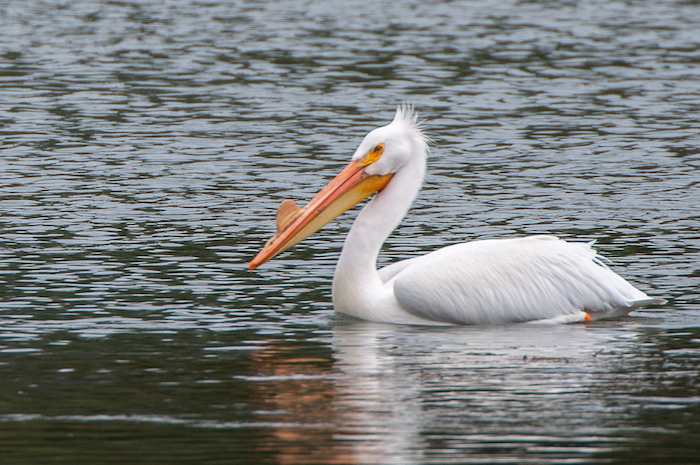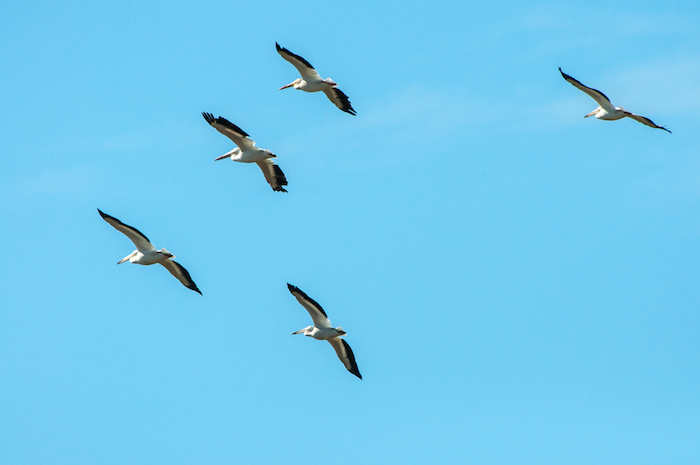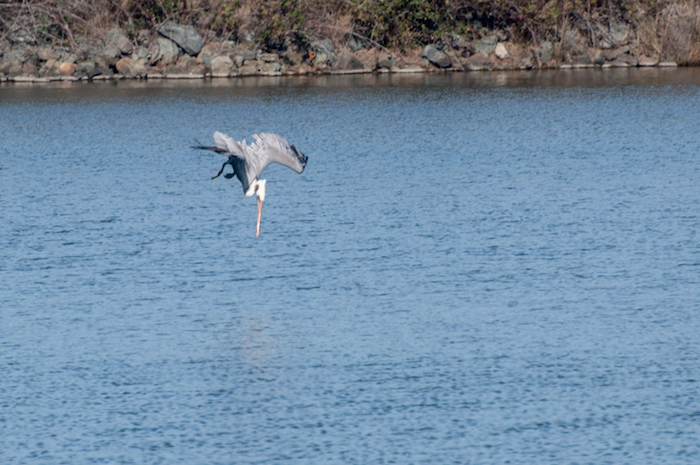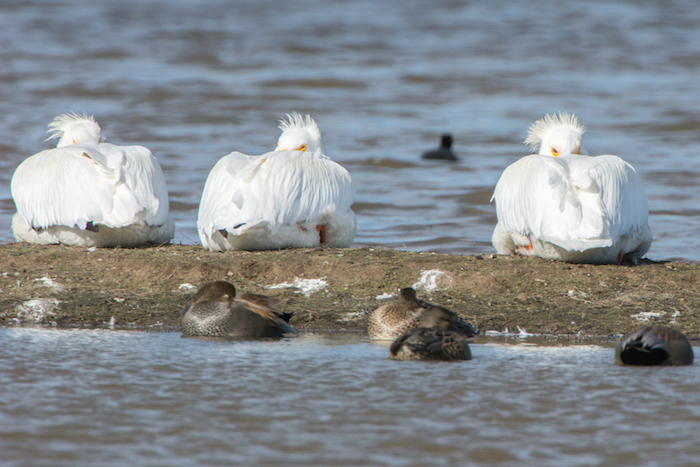
American White Pelican
What California bird weighs five pounds more than our ten-pound eagles, has a wingspan two feet longer than the eagles’ seven feet, and a beak twice as long as a great blue heron’s? What bird is rumored to eat its own young, and also to feed its young with its own blood? What bird is noted in a 1910 poem by Dixon Lanier Merritt as wonderful because “His bill will hold more than his belican”?
Yes, the bird is the American White Pelican. (And yes, the poem is by Dixon Merritt, not Ogden Nash.)
These old birds, with fossil relatives going back half way to the dinosaurs, are shy of people, and remain an infrequent sight in Shasta County. But they are here. They nest along the shallow lakes of north-eastern California, and they winter even closer, throughout the Sacramento River Delta. Occasionally we spot them.

On a quiet summer day they might float high overhead. They typically proceed in a silent group of fifteen or so, with not a single one of them deigning to speak or flap a wing. Their long bills spear forward like a pteradactyl’s; their motionless, extended wings show black flight feathers on otherwise snowy plumage. They hang in the summer-blue sky, still as pallbearers, seeming beyond the rule of something as mundane as gravity.
But of course they are fellow Earthlings, and sometimes will tilt Earthward and glide severally into a water-ski landing on a shallow lake. They prefer shallow lakes because of their feeding style.

Brown Pelican Dive
Their coastal cousins, the brown pelicans, plunge into the water and scoop a beak-full of ocean and, they hope, stunned fish. White pelicans, on the other hand, paddle along the surface to find their food. Frequently they group together to swim-herd fish into shallow coves, where they can more easily scoop a mouthful of prey, either from their normal floating position or by tipping tail-up like a mallard. White pelicans will swallow salamanders and crawdads, but they mostly dine on warm-water fish like carp and minnows.
Each spring, the adults’ beaks brighten from yellow to orange, and they develop a rounded ornamental fin on their upper bills—an accessory that perhaps one must be a pelican to admire. The mated pair scrapes out a hollow in sand or gravel where the female lays 2-3 eggs. Only one of the young will usually fledge. Their in-nest competition is fierce.
While incubating or otherwise resting, pelicans often tuck their bills down their front sides. It may be this habit and the red-orange bill of the breeding season that fostered the mistaken myth that adult pelicans feed the young their blood. They do not.

As for the grisly tale that parent pelicans eat their offspring: adult pelicans do not carry food to their young in their pouched beaks. They swallow the food and then regurgitate it for the nestling. On its part, the baby stimulates regurgitation by sticking its own beak down its parent’s throat. The scene looks very much like the parent is eating its baby, head first. The feeding practice and the tale it inspired are primitive and perhaps galling; but the unpretentious dining style seems to have worked for 30 million years.
White pelicans declined for the first half of last century, perhaps in part due to the loss of a major nesting rookery when the progenitors of the Westlands Water District drained Tulare Lake, which at the time was the largest lake surface west of the Mississippi. But now the pelicans are recuperating—into new trouble, expanding into the southeast where catfish farms create rich feeding grounds.

No comments yet.